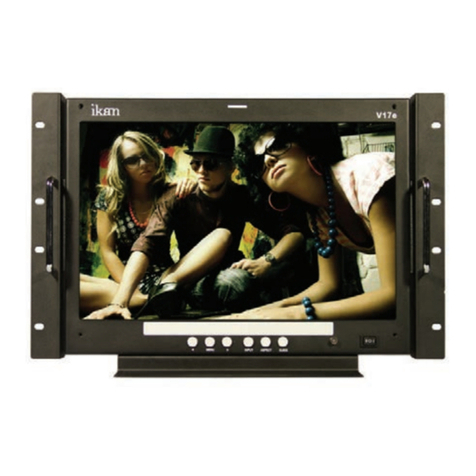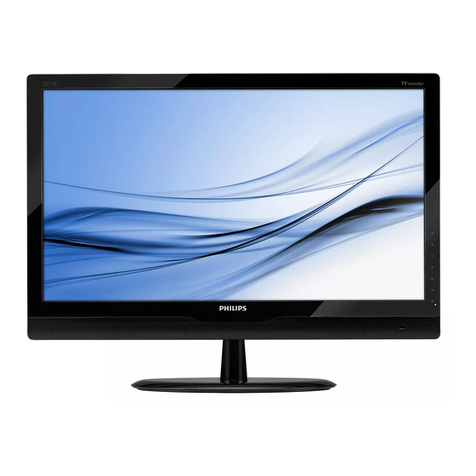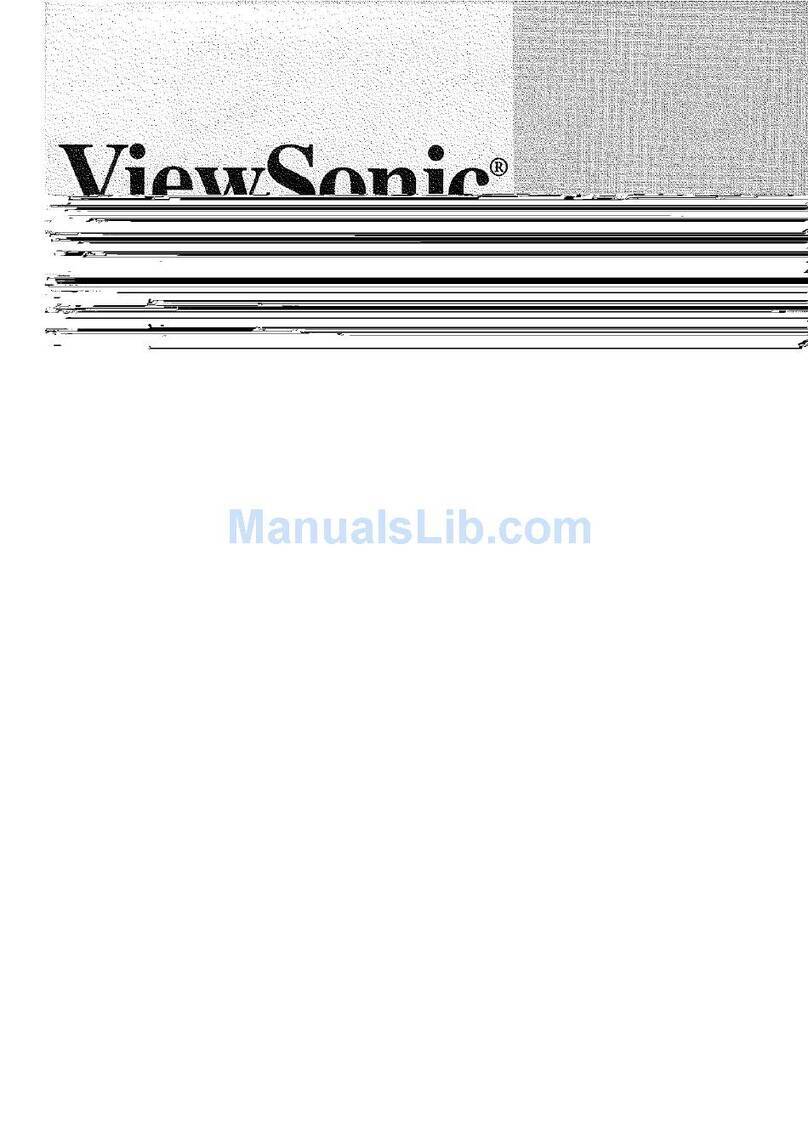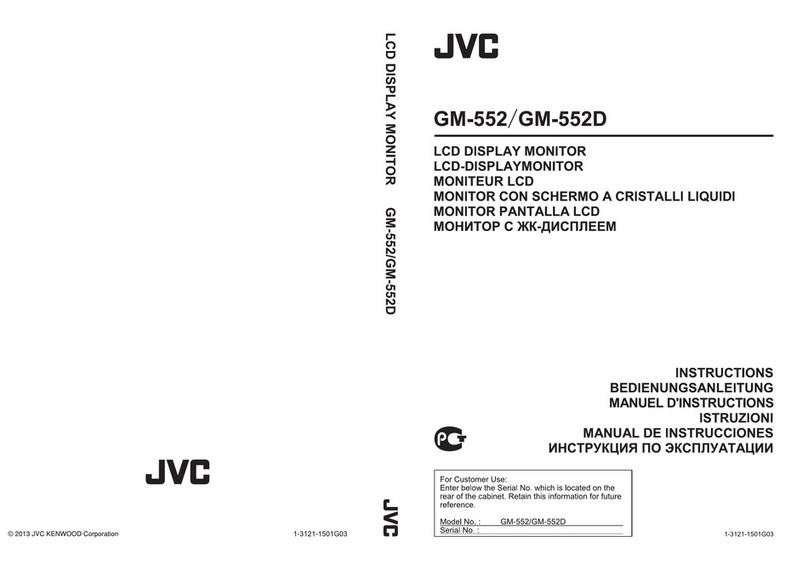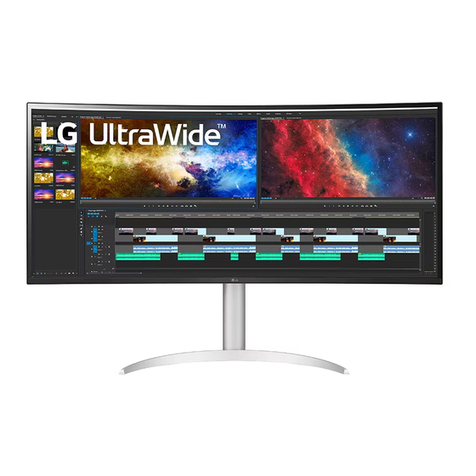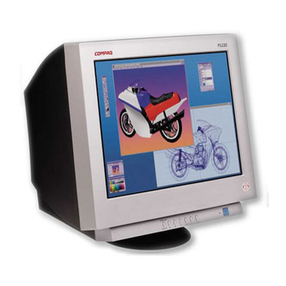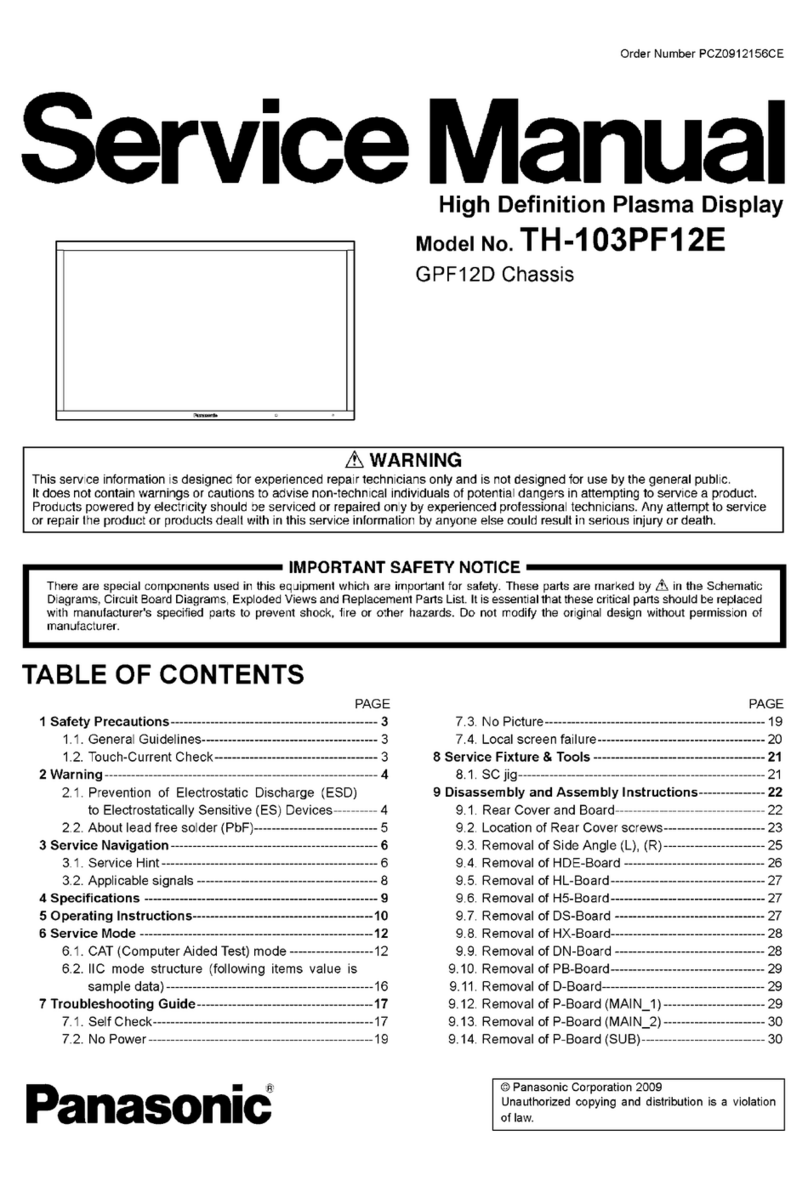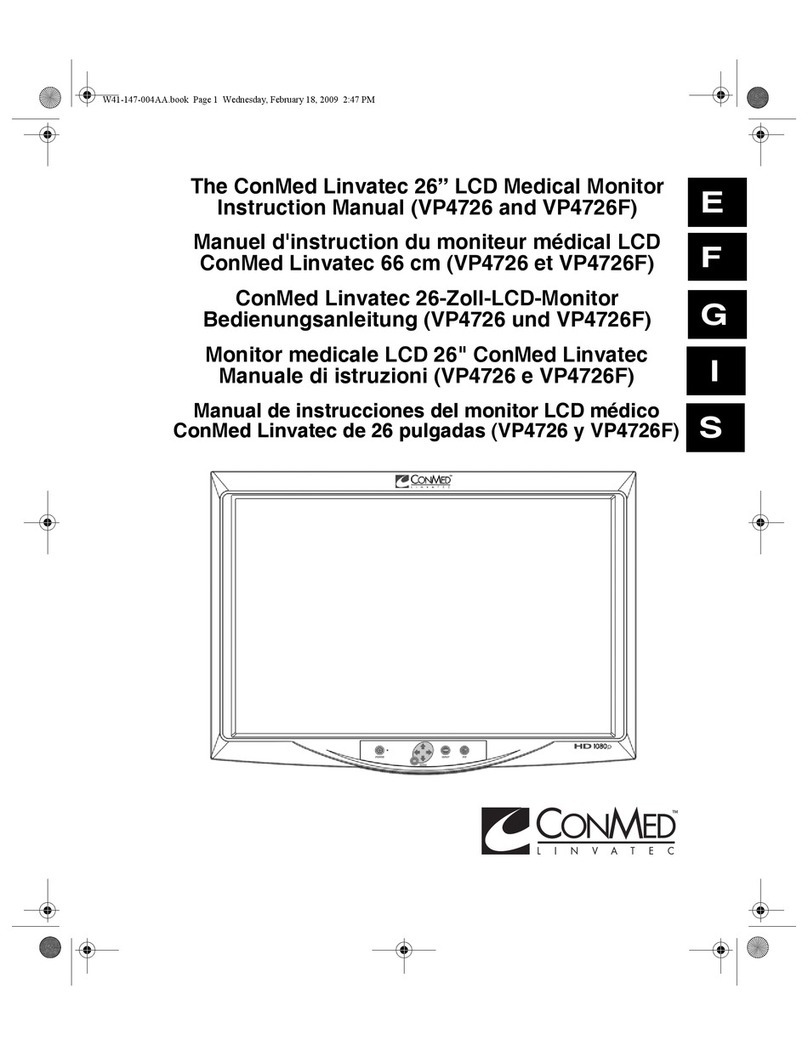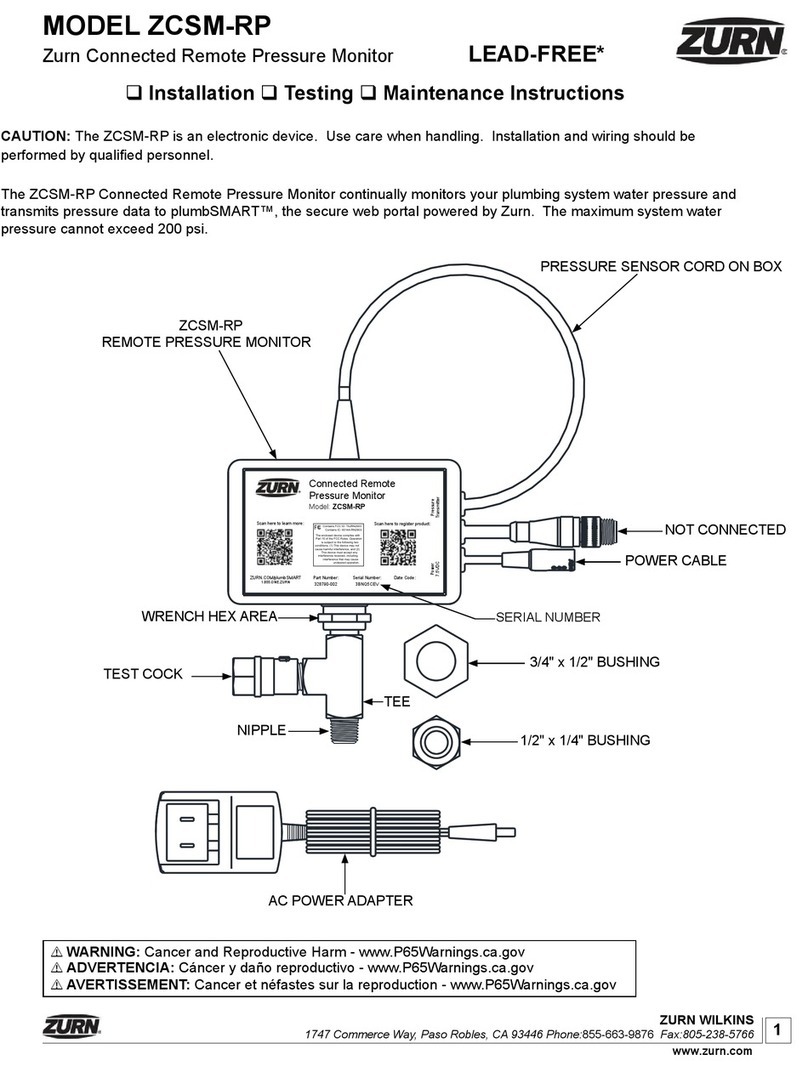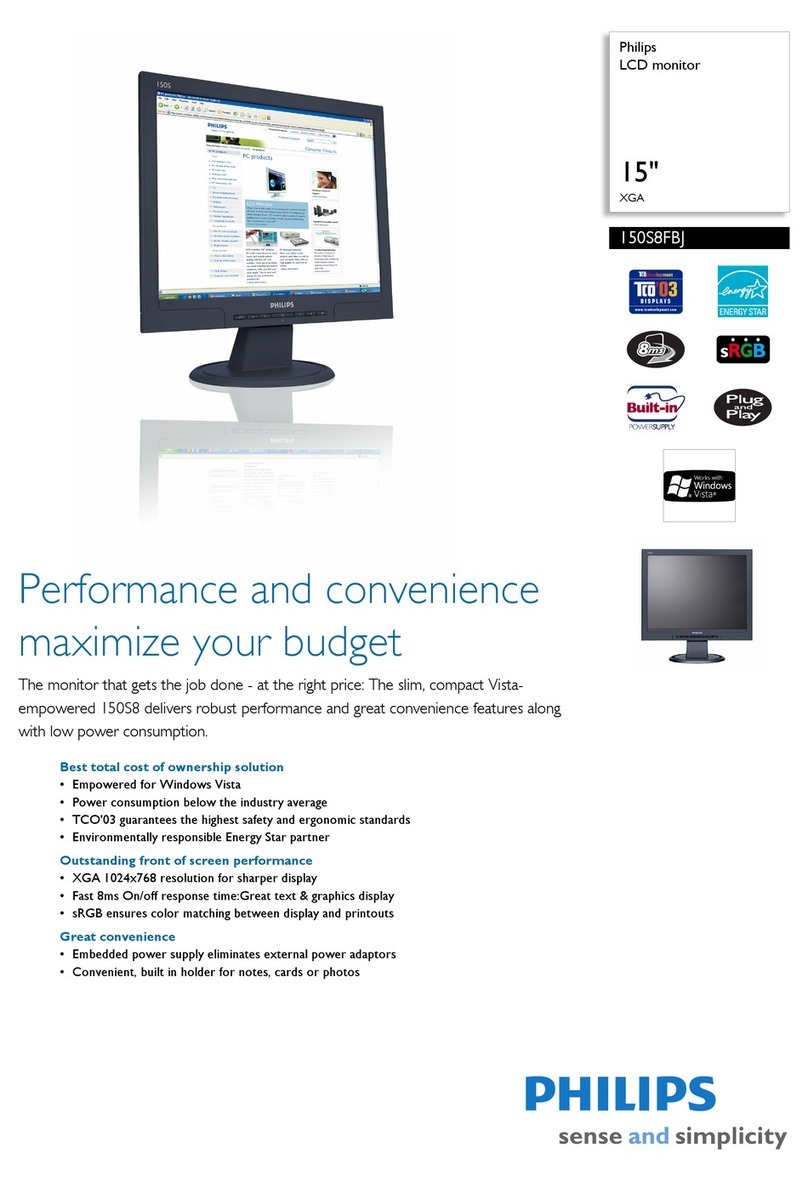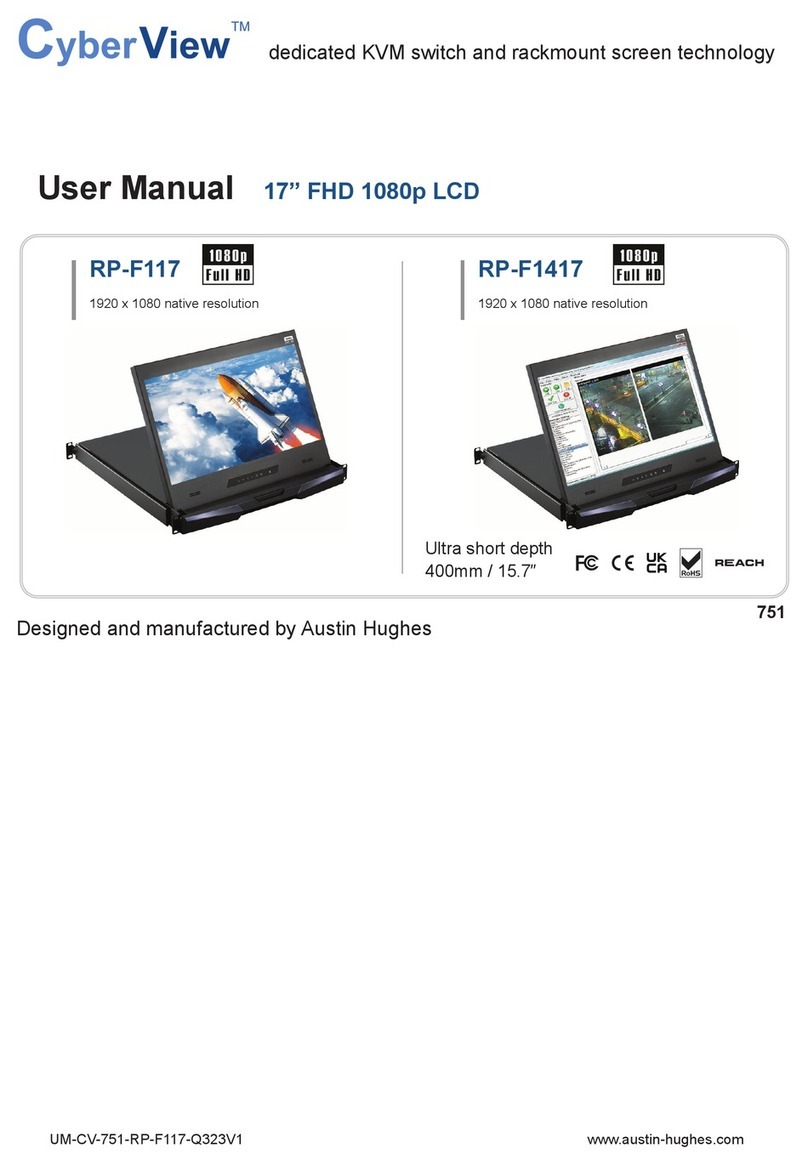Vitalograph 4500 User manual

8/3/2018 07608_2
https://vitalograph.com/downloads/display/41 1/17
Select Language ▼
AIM
(Aerosol Inhalation Monitor)
Model 4500
User Training Manual

8/3/2018 07608_2
https://vitalograph.com/downloads/display/41 2/17
UK Sales
Vitalograph Ltd.
Maids Moreton, Buckingham, MK18 1SW, England
Phone: (01280) 827110
Fax: (01280) 823302
e-mail: [email protected]
www.vitalograph.co.uk
Export Sales
Vitalograph Ltd.
Maids Moreton, Buckingham, MK18 1SW, England
Phone: +44 1280 827120
Fax: +44 1280 823302
e-mail: [email protected]
www.vitalograph.eu
Vitalograph GmbH
Rellinger Straße 64a, 20257 Hamburg, Germany
Phone: (040) 54 73 91-0
Fax: (040) 547 391 40
e-mail: [email protected]
www.vitalograph.de
Vitalograph Inc.
13310 West 99th Street, Lenexa, Kansas 66215, U.S.A.
Phone: (913) 730-3200
Fax: (913) 730-3232
e-mail: [email protected]
www.vitalograph.com
Vitalograph (Irl.) Ltd.
Gort Road Business Park, Ennis, Co. Clare, Ireland
Phone: (065) 6864100
Fax: (065) 6829289
e-mail: [email protected]
www.vitalograph.ie
© Copyright Vitalograph 2013
Current Edition (Issue 2)
Cat. No. 07608
is a registered trademark

8/3/2018 07608_2
https://vitalograph.com/downloads/display/41 3/17
Table of Contents
1. DESCRIPTION OF THE VITALOGRAPH AIM
2. FEATURES OF THE VITALOGRAPH AIM
3. GETTING THE VITALOGRAPH AIM READY FOR USE
4. POWER MANAGEMENT IN THE VITALOGRAPH AIM
5. OPERATING THE VITALOGRAPH AIM
6. CLEANING INSTRUCTIONS
1. CLEANING AND DISINFECTING THE VITALOGRAPH AIM
7. FAULT FINDING GUIDE
8. CUSTOMER SERVICE
9. CONSUMABLES AND ACCESSORIES
10. EXPLANATION OF SYMBOLS
11. TECHNICAL SPECIFICATIONS
12. CE NOTICE
13. FDA NOTICE
14. DECLARATION OF CONFORMITY
15. GUARANTEE

8/3/2018 07608_2
https://vitalograph.com/downloads/display/41 4/17
1. DESCRIPTION OF THE VITALOGRAPH AIM
The device (Aerosol Inhalation Monitor) is designed to enable a medical professional to objectively
assess in detail how the test subject uses their inhaler. This detailed knowledge allows the medical
professional to assess and coach the test subject in perfecting their inhalation technique.
The main components for the Vitalograph AIM are shown in Figures 1 and 2.
Figure 1: Components of the AIM

8/3/2018 07608_2
https://vitalograph.com/downloads/display/41 5/17
Figure 2: Components of the AIM – User Interface
2. FEATURES OF THE VITALOGRAPH AIM
The Vitalograph AIM features include:
Assists in training patients to use their inhalers properly
Inspiratory acceleration at the start of inspiration
Timing of firing of MDI inhaler simulator
Inspiratory flow rate throughout inspiration
Inhalation time within target flow range
Breath hold time at the end of inhalation
Identifies and qualifies poor inhaler technique
Easy to use and hygienic.
Disposable MDI and DPI inhaler simulator mouthpieces
Clear sounds for audio feedback
Device guides the user through use
3. GETTING THE VITALOGRAPH AIM READY FOR USE
1. Remove the battery door from the rear of the unit. Fit four AAA 1.5V batteries, and replace the
battery door.
2. Attach the dual silicone tubing (see Figure 1), to the port on the side of the AIM.

8/3/2018 07608_2
https://vitalograph.com/downloads/display/41 6/17
4. POWER MANAGEMENT IN THE VITALOGRAPH AIM
The AIM operates with 4 AAA 1.5V disposable batteries. If the battery light (See Figure 2) comes on the
batteries need to be replaced. Replace the batteries by removing the battery door on the underside of
the device.
Note: Dispose of used batteries safely.
5. OPERATING THE VITALOGRAPH AIM
1. Connect a new MDI or DPI inhaler simulator mouthpiece to the device via the silicone tubing.
Note: The inhaler simulators are single patient use.
2. If an MDI inhaler simulator mouthpiece is being used insert the placebo.
Note: If a placebo is not fitted then flow measurements will not be correct.
3. Press the power button and select the inhaler simulator option
DPI simulator
MDI simulator
Spacer simulator
4. Instruct the test subject to breath fully out, but not through the inhaler simulator.
5. Instruct the subject to position the inhaler simulator between the lips sealed around the
mouthpiece.
Note: Ensure that the holes adjacent to the tubing connection to the inhaler simulator are not
obstructed.
6. Depending on the inhaler simulator option selected the following instructions should be followed:
a. DPI Simulator
i. Instruct the subject to take a forceful deep breath in until their lungs are full. The flow
lights will light up.
ii. The aim is to get the flow indicator into the green zone as quickly as possible, but not
to inhale too fast.
iii. The subject should continue to inhale until their lungs are full. The inhalation time
lights will light up one second at a time.
iv. The subject should hold their breath for as long as comfortable (at least 3 seconds).
The breath hold lights will light up one second at a time.
v. When the subject ceases breath hold, press the end of breath-hold button.
b. MDI Simulator
i. Instruct the subject to take a slow deep breath and simultaneously press the placebo
canister. The flow lights and the canister activation lights will light up.
ii. The aim is to press the canister as the subject starts to inhale, and to continue to
inhale for as long as possible, but not too fast.

8/3/2018 07608_2
https://vitalograph.com/downloads/display/41 7/17
iii. The subject should continue to inhale until their lungs are full (at least 3 seconds). The
inhalation time lights will light up one second at a time.
iv. The subject should hold their breath for as long as comfortable (at least 3 seconds).
The breath hold lights will light up one second at a time.
v. When the subject ceases breath hold, press the end of breath-hold button.
c. Spacer Simulator
Note: The MDI inhaler simulator mouthpiece is used to simulate the spacer. Do not attach a
spacer.
i. Instruct the subject to press the canister just before or as inhalation starts. The
canister activation lights will light up.
ii. The Spacer Simulator allows the subject to take a single or multiple breaths.
iii. The subject should continue until at least 3 seconds inhalation is achieved. The
inhalation time lights will light up one second at a time.
iv. The subject should hold their breath for as long as comfortable (at least 3 seconds).
The breath hold lights will light up one second at a time.
v. When the subject ceases breath hold, press the end of breath-hold button.
7. The individual results lights (see Figure 3) and TechniqueGood/Poor summary (see Figure 4 - 6)
will then appear.
8. To repeat, press the appropriate inhaler simulator option button.
Note: The operating instructions and results shown are for the generic AIM device. Some variants will
have different operating instructions and results. Please refer to the individual Quick Start Guide for
these variants.
Figure 3: Results lights

8/3/2018 07608_2
https://vitalograph.com/downloads/display/41 8/17
Figure 4: DPI Simulator Technique Summary
Figure 5: MDI Simulator Technique Summary
Figure 6: Spacer Simulator Technique Summary
6. CLEANING INSTRUCTIONS
6.1 Cleaning and Disinfecting the Vitalograph AIM
A new disposable inhaler simulator should be used for each subject. The frequency of cleaning and
disinfecting is dependent on the Facility’s Risk Assessment, usage, and test environment.

8/3/2018 07608_2
https://vitalograph.com/downloads/display/41 9/17
Table of Materials Used & Cleaning/Disinfection Methods
This listing of materials used is given to provide users with information to allow the assessment of other
cleaning and disinfecting procedures available in the facility on this device.
Part Material Clean/
Disinfect Autoclave Recommended Disinfectants
Top Case
Exterior ABS Clean No Wiping with a 70% isopropyl alcohol impregnated
cloth provides a suitable form of cleaning and low-
level disinfection. This may be preceded by
cleaning with an anti-static foam cleaner if
necessary.
Bottom
Case
Exterior
AMS Clean No
Overlay
label PET Film Clean No
White
Silicone
Tubing
Silicone Clean Viable
Note: Always follow the safety guidelines given by the manufacturer of cleaning and disinfectant
chemicals.
All external parts of the Vitalograph AIM require cleaning, i.e. the removal of visible particulate
contamination. The AIM is not designed as a ‘sterile’ device.
Definitions of cleaning and disinfection are as defined in “Sterilization, Disinfection and Cleaning of
Medical Equipment: Guidance on Decontamination from the Microbiology Committee to Department of
Health Medical Devices Directorate, 1996”.
Recommendations for chemical disinfectants are derived from the PHLS publication “Chemical
Disinfection In Hospitals 1993”.
7. FAULT FINDING GUIDE
Problem Fault
Symptoms: Test begins automatically
Inhalation time accumulates automatically without the subject inhaling
Possible Causes:
(In probable order) Flowhead and/or tubing not stationary at the start of test. Hold them
steady until the ‘Blow Icon’ appears
Press the DPI, MDI or Spacer simulator button
Problem Fault
Symptoms: Rocking device
Possible Causes:
(In probable order) Check for damaged or missing rubber feet
If any of the rubber feet are damaged or missing replace all rubber
feet
Problem Fault
Symptoms: No flow measurements
Possible Causes:
(In probable order) Ensure that the silicone tubing is not pinched or trapped

8/3/2018 07608_2
https://vitalograph.com/downloads/display/41 10/17
Ensure that the silicone tubing is fitted to the AIM device and the
inhaler simulator
Problem Fault
Symptoms: Cannot read user interface
Lights not coming on
Possible Causes:
(In probable order) The battery may be low. Replace the batteries
Main PCB failure – contact support
Problem Fault
Symptoms: MDI simulator activation light not coming on
Possible Causes:
(In probable order) Placebo canister is not fitted
Placebo canister is empty
Problem Fault
Symptoms: Flow measurement appears low for the MDI simulator
Possible Causes:
(In probable order) Placebo canister needs to be fitted. If a placebo is not fitted then flow
measurements will not be correct
8. CUSTOMER SERVICE
Service and repairs should be carried out only by the manufacturer, the approved importer or by Service
Agents specifically approved by Vitalograph.
For the names and addresses of approved Vitalograph Service Agents or to arrange spirometry
workshops, please refer to the contact information at the start of this manual.
9. CONSUMABLES AND ACCESSORIES
Cat. no Description
45610 Disposable DPI Inhaler Simulator (25)
45611 Disposable MDI Inhaler Simulator (25)
79192 Replacement silicone tubing
45027 HFA Placebo Aerosol (8)
10. EXPLANATION OF SYMBOLS
Internally powered ME equipment
Type BF equipment
Voltage DC

8/3/2018 07608_2
https://vitalograph.com/downloads/display/41 11/17
Attention (reference relevant section in manual)
Manufacturer
Year of Manufacture
Attention(reference relevant section in manual)
The device must be taken to separate collection at the product end-of-life. Do not dispose of
these products as unsorted municipal waste.
11. TECHNICAL SPECIFICATIONS
Product Vitalograph AIM
Model 4500
Flow detection principle Differential pressure sensor
Flow impedance of inhaler simulator mouthpiece DPI: 0.49 cmH2O/L/min at 50 L/min
MDI & Spacer: 0.016 cmH2O/L/min at 50 L/min
Flow detection Flow sampling @ 20Hz
Maximum flow 100 L/min
Flow accuracy when operated in operating
temperature range conditions Better than ±5% or 5L/min
Power Supply 4 x AAA, 1.5V batteries
Operating temperature range Design limits: 10–40ºC
Safety standards EN ISO 60601:2006 {IEC 60601 -1:2005}
QA/GMP standards EN ISO 13485:2003, CMDR SOR/98-282 & FDA
21 CFR 820
Size 165 mm x 133 mm x 39.6 mm
Weight 260g (including batteries and
tubing)
Storage Temperature 0–50ºC
Storage Relative Humidity 10%–95%

8/3/2018 07608_2
https://vitalograph.com/downloads/display/41 12/17
12. CE NOTICE
Marking by the symbol indicates compliance of the Vitalograph AIM to the Medical Devices Directive
of the European Community. Such marking is indicative that the Vitalograph AIM meets or exceeds the
following technical standards:
Guidance and manufacturer’s declaration – electromagnetic emissions
The Model 4500 AIM is intended for use in the electromagnetic environment specified below. The
customer or the user of the Model 4500 AIM should assure that it is used in such an environment.
Emissions test Compliance Electromagnetic environment –
guidance
RF emissions CISPR 11 Group 1 The Model 4500 AIM uses RF energy
only for its internal function. Therefore,
its RF emissions are very low and are
not likely to cause any interference in
nearby electronic equipment.
RF emissions CISPR 11 Class B The Model 4500 AIM is suitable for use
in all establishments, including
domestic establishments and those
directly connected to the public low-
voltage power supply network that
supplies buildings used for domestic
purposes.
Harmonic emissions IEC
61000-3-2 Battery Operated
Voltage fluctuations/ flicker
emissions IEC 61000-3-3 Battery Operated
Guidance and manufacturer’s declaration – electromagnetic immunity
The Model 4500 AIM is intended for use in the electromagnetic environment specified below. The
customer or the user of the Model 4500 AIM should assure that it is used in such an environment.
Immunity test IEC 60601 Test level Compliance level Electromagnetic
environment - guidance
Electrostatic discharge
(ESD) IEC 61000-4-2 ±6 kV contact
±8 kV air ±6 kV contact
±8 kV air Floors should be wood,
concrete or ceramic tile.
If floors are covered
with synthetic material,
the relative humidity
should be at least 30%.

8/3/2018 07608_2
https://vitalograph.com/downloads/display/41 13/17
Electrical fast
transient/burst IEC
61000-4-4
±2kV for power supply
lines
±1 kV for input/output
lines
Battery Operated
Surge IEC 61000-4-5 ±1kV differential mode
±2 kV common mode Battery Operated
Voltage dips, short
interruptions and
voltage variations on
power supply input lines
IEC 61000-4-11
<5 % 100V (>95% dip in
100V) for 0.5 cycle
40 % 100V (60% dip in
100V) for 5 cycles
70 % 100V (30 % dip in
100V) for 25 cycles
<5 % 100V (>95 % dip
in 100V) for 5 sec
Battery Operated
Power frequency (50/60
Hz) magnetic field IEC
61000-4-8
3 A/m Not Applicable Power frequency
magnetic fields should
be at levels
characteristic of a
typical location in typical
commercial or hospital
environment.
Guidance and manufacturer’s declaration – electromagnetic immunity
The Model 4500 AIM is intended for use in the electromagnetic environment specified below. The
customer or the user of the Model 4500 AIM should assure that it is used in such an environment.
Immunity test IEC 60601 Test level Compliance level Electromagnetic
environment - guidance
Conducted RF. IEC
61000-4-6
Radiated RF. IEC
61000-4-3
3 Vrms 150 kHz to 80
MHz in ISM bands
3 V/m 80 MHz to 2.5
GHz
Battery operated
3V/m from 80MHz top
2.5GHz
Portable and mobile RF
communications
equipment should be
used no closer to any
part of the system,
including cables, than
the recommended
separation distance
calculated from the
equation applicable to
the frequency of the
transmitter.
Recommended
separation distance
d = 1.2√P
√

8/3/2018 07608_2
https://vitalograph.com/downloads/display/41 14/17
d = 1.2√P…80MHz to
800 MHz
d = 2.3√P…800 MHz to
2.5GHz
Where P is the
maximum output power
rating of the transmitter
in Watts (W) according
to the transmitter
manufacturer and d is
the recommended
separation distance in
metres (m) Field
strengths from fixed RF
transmitters, as
determined by an
electromagnetic site
survey, should be less
than the compliance
level in each frequency
range.
Interference may occur
in the vicinity of
equipment marked with
the following symbol:
Recommended separation distances between portable and mobile RF communication equipment
and the Model 4500 AIM
The Model 4500 AIM is intended for use in an electromagnetic environment in which radiated RF
disturbances are controlled. The customer or the user of the Model 4500 AIM can help prevent
electromagnetic interference by maintaining a minimum distance between portable and mobile RF
communications equipment (transmitters) and the Model 4500 AIM as recommended below, according
to the maximum output power of the communications equipment.
Rated Maximum
Output Power of
Transmitter
W
Separation Distance According to Frequency of Transmitter M
150 kHz to 80 MHz
d = 1.2 √ P 80 MHz to 800 MHz
d = 1.2 √ P 800 MHz to 2,5 GHz
d = 2.3 √ P
0,01 0.1m 0.1m 0.12m
0,1 0.4m 0.4m 0.7m
1 1.2m 1.2m 2.3m
10 3.7m 3.7m 7.4m

8/3/2018 07608_2
https://vitalograph.com/downloads/display/41 15/17
Recommended separation distances between portable and mobile RF communication equipment
and the Model 4500 AIM
100 11.7m 11.7m 23.3m
For transmitters rated at a maximum output power not listed above, the recommended separation
distance d in metres (m) can be estimated using the equation applicable to the frequency of the
transmitter, where P is the maximum output power rating of the transmitter in watts (w) according to the
transmitter manufacturer.
NOTE 1: At 80 MHz and 800 MHz, the separation distance for the higher frequency range applies.
NOTE 2:These guidelines may not apply in all situations. Electromagnetic propagation is affected by
absorption and reflection from structures, objects and people.
Medical Devices may be affected by cellular telephones and other personal or household devices not
intended for medical facilities. It is recommended that all equipment used near the Vitalograph product
comply with the medical electromagnetic compatibility standard and to check before use that no
interference is evident or possible. If interference is suspected or possible, switching off the offending
device is the normal solution, as is required in aircraft and medical facilities.
Medical electrical equipment needs special precautions regarding EMC and needs to be installed and
put into service according to the EMC information provided.
Portable and mobile RF communications equipment can affect medical electrical equipment.
13. FDA NOTICE
Caution: Federal Law restricts this device to sale by, or on the order of a physician.

8/3/2018 07608_2
https://vitalograph.com/downloads/display/41 16/17
14. DECLARATION OF CONFORMITY
Product: Vitalograph Model 4500 AIM
Vitalograph hereby ensures and declares that the above product associated with this user manual, is
designed and manufactured in accordance with the following QMS regulations and standards:
European Medical Devices Directive {MDD} 93/42/EEC, as amended.
This device is classified as 1 with a measuring function per Annex IX of the MDD also
meets the provisions of the Essential Requirements, Annex I, via compliance with
Annex II of the Medical Devices Directive as per Article 11, section 3a, excluding point
4 of Annex II.
Canadian Medical Device Regulation {CMDR SOR/98-282}
FDA Quality System Regulation {QSR} 21 CFR 820.
EN ISO 13485: 2003. Medical devices. Quality management systems. Requirements for regulatory
purposes.
Certifying Body {for 93/42/EEC and CMDR}: British Standards Institute {BSI}
BSI Notified Body #: 0086
Certificate Nos. CE 00772, MD 82182, FM 83550
Signed on behalf of Vitalograph (Ireland) Ltd.
B. R. Garbe.
Group Managing Director

8/3/2018 07608_2
https://vitalograph.com/downloads/display/41 17/17
15. GUARANTEE
Terms of Guarantee
Subject to the conditions listed below, Vitalograph Ltd. and its associated companies, (hereinafter called
the Company) guarantee to repair or at its option replace any component thereof, which, in the opinion of
the Company is faulty or below standard as a result of inferior workmanship or materials.
The conditions of this guarantee are:-
1. This Guarantee shall only apply to hardware defects which are notified to the Company or to its
accredited distributor within 1 year of the date of purchase of the equipment, unless otherwise
agreed in writing by the Company.
2. Software (meaning computer software, or user installable modules) is guaranteed for 90 days from
the date of purchase.
3. The Company warrants that the software when correctly used in conjunction with the hardware will
perform in the manner described in the Company's literature and user manuals. The Company
undertakes to rectify at no expense to the customer any software failure notified within the period
stated above, provided that the failure can be recreated and the software has been installed and
used in accordance with the user manual. Notwithstanding this clause, the software is not
warranted to be free of errors.
4. This Guarantee does not cover any faults caused by accident, misuse, neglect, tampering with the
equipment, use of consumable items or parts not approved by the Company, or any attempt at
adjustment or repair other than by personnel accredited by the Company, nor does it cover
reinstatement of any configuration changes caused by the installation of any software.
5. If a defect occurs please contact the supplier from whom it was purchased for advice. The
Company does not authorize any person to create for it any other obligation or liability in
connection with Vitalograph® equipment.
6. This Guarantee is not transferable and no person, firm or company has any authority to vary the
terms or conditions of this guarantee.
7. To the maximum extent permitted by law, the Company does not accept liability for any
consequential damages arising out of the use of, or inability to use any Vitalograph® equipment.
8. This Guarantee is offered as an additional benefit to the Consumer's statutory rights and does not
affect these rights in any way.
Table of contents
